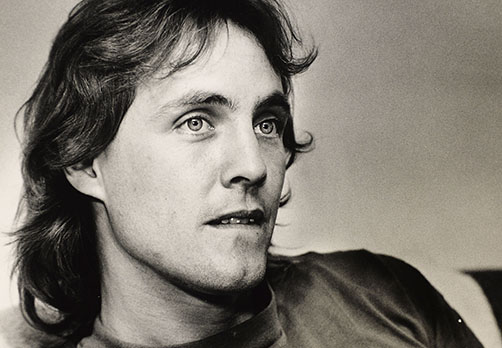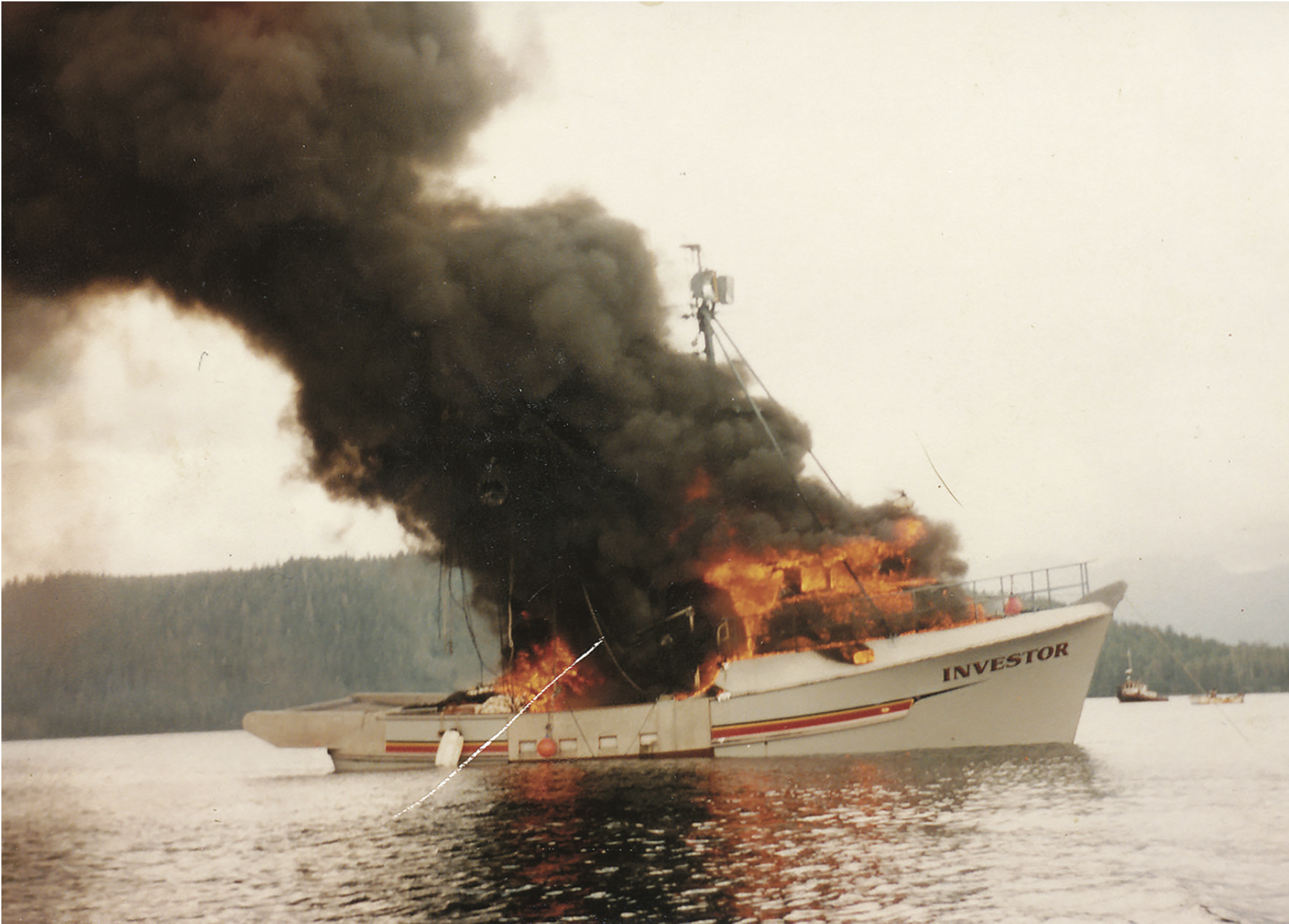I rarely see fit to respond to blog comments by writing a full post in reply. Comments worth publishing — and they are rare — usually get an in-line response. But Loren Stanton’s comments about John Peel and his eyes got me. Not that he’s wrong, mind you. Just that he presumes some things that may not be as obvious as he surmises.
Here’s the starting point, taken from his comments on a piece I posted about Alice Irons.
“I was in Ketchikan the summer of 86. I was in the courthouse many times the summer of 86. I met John Peel during the trial. I think you never met John Peel because if you did you would remember him instantly for something no witness ever mentioned.”
Loren Stanton

Counter Argument
Point One: As one of the victim’s siblings wrote me, “The trial lawyer dude that left the message should have been more forthcoming with his take on the so-called feature. Must have an agenda.”
I won’t address the Loren Stanton agenda. Or even if there is one. It’s hard enough to peer into my own mind, much less attempt mental jujitsu on someone completely unknown to me. But…
What’s ironic is that Stanton does precisely what he’s criticizing. He does not describe the feature. Of course, he noticed this feature because he was in a calm and controlled environment. A courthouse. He had the opportunity to watch, see and interact with John Peel at his leisure.
And the witnesses? Not so much.
Alice in Wonderland
Let’s start with Alice Irons. She was a server at one of Craig’s only — and busiest — restaurants. If you’ve ever been to Craig during the height of the fishing season, you’ll know it’s a three-ring circus. She was juggling between the kitchen and her tables. That’s tables plural. She noticed someone at the Coulthurst table only because he was in her way. And, in all her accounts, that person was in a frenzied interaction with Mark Coulthurst. Not with her. So those ten minutes or so may not count for much when it comes to noticing details. Even obvious details.
Although there is this from her affidavit. After seeing John Peel at the courthouse, she said: “He was looking straight at me in the eye. That is when I seen him. I knew that was the man that I’d seen in the restaurant. He was the guy sitting at the table that night with the Coulthursts.” [1]
Then there’s Sue Domenowske-Page. It was Domenowske-Page who actually spoke to the skiff operator as he came to shore on the day of the Investor fire. Let’s consider what else was going on, just across the water. The Investor was on fire, its smoke devouring the horizon. At the very least, it was a huge distraction. Another place for her eyes to go. A bigger place, under the known circumstances.

Looking At a Killer
More important, Sue didn’t know she was looking at a killer. She would only know that later, when she was trying to reconstruct her memory. And memory is a tricky thing. Would she remember his eyes? She should have, I suppose. But if it was John Peel, might he not avert his eyes? Especially if he knows they’re an unmistakable feature?
As a defense attorney I would have hammered this fact and I am not sure that Weidner ever mentioned it.
Loren Stanton
Point Two: Why would Weidner ever mention it? Or more to the point, when would he have mentioned it? During his cross of prosecution witnesses? What if the prosecution re-called the witness? That was a risk. If you want someone to blurt out a key quality about John Peel, you don’t let them in on the secret. You want them to voluntarily blurt it out of their own volition.
This same notion applies to the prosecution, by the way. In fact, it’s probably even riskier for the prosecution. To even hint at, much less suggest, a notable feature of the defendant would make their already tenuous case look even worse in the minds of jurors. And Phillip Weidner would have objected vehemently. As he should.

Move, Talk and Try On Clothing
What the prosecution did try was to have John Peel stand and move about in the courtroom. Maybe that would elicit an exclamation about those eyes. During the second trial. Juneau Judge Carpeneti turned them down.
But Sue Domenoske did succeed in getting Peel to turn his face sideways at the first trial. Not exactly an angle that showed off his eyes, unfortunately. And it was here that Phillip Weidner put on his best antics, trying, in Judge Schulz’s words, to distract the jury by slowly, methodically stroking his beard.
What Sue Said
Here’s what happened next:
Almost by impulse, [Prosecutor] Pat Gullufsen showed her a color photograph of John Peel. He was fairly certain the witness had never seen it before. The picture, taken by one of Peel’s friends during a past fishing season, showed him holding the tiller of a boat and staring into the camera. “I’d say that’s a picture of the skiff operator,” Domenowske-Page said to the surprise of everyone in the courtroom. “That’s the skiff operator.” She moved back noticeably in her chair as she made the revelation.
Peel’s attorneys immediately requested that the photo not be shown to the jurors, claiming that to show the witness only one photo was suggestive. “They got more identification on the picture than they did in court,” Brant McGee argued, unsuccessfully. “They’re trying to bolster their lack of an in-court I.D.”

Not a Lawyer
My non-lawyerly take is that the best time to mention Peel’s eyes was during closing arguments. Why? Because by then the jurors presumably knew something that the witnesses didn’t. Or at the very least knew something witnesses had not mentioned. So it was precisely at this point that Phillip Weidner had occasion to mention those eyes. And only Phil Weidner. He had something to gain. The prosecution, not so much.
To the best of my knowledge, though, Weidner did not mention Peel’s eyes in his closing argument at the first trial. Nor did he do so at the second trial. So much for hammering this fact.
What Loren Said
That said, credit where credit is due. Loren Stanton is correct in saying, “They could never get a conviction.” The case against John Peel was a weak one. A circumstantial case at best. Prosecutor Mary Anne Henry came close to admitting as much in her post-trial comments.
It is also worth noting that the grand jury twice saw fit to indict Mr. Peel. That two different judges said there was enough evidence to take him to trial. That multiple court of appeals decisions agreed. That two Attorney’s General decided it was worth it to go forward with a second trial (although one, Grace Schaible, came to regret it).
I know. Here come the conspiracy theorists. Oh well. I’ve never met John Peel either.
And thank you much, Loren, for taking the time to write. Seriously.
[1] It might not have helped much had she mentioned the unmistakable quality of Peel’s eyes. Because what’s notable is that Alice’s identification came under questionable circumstances. It occured at the courthouse after someone else had identified Peel by name. It was an “a ha” that seemed to be lacking the “a.”
Excerpts from the unpublished original manuscript, “Sailor Take Warning,” by Leland E. Hale. That manuscript, started in 1992 and based on court records from the Alaska State Archive, served as the basis for “What Happened in Craig.”
Copyright Leland E. Hale (2021). All rights reserved.

Order “What Happened In Craig,” HERE and HERE. True crime from Epicenter Press.
I hear you as you analyze the impact of bringing up his eyes (his eyes were a particular shade of blue which people might describe in different ways but are unique) might have in each segment of the trial. For me the most important point is that the “witnesses” did not identify J Peel the first time they saw him. I believe that the Troopers made such an effort to get the witnesses to J Peel to see if he was the one e.g. in the Hill Bar that once the witness said no it was highly unlikely anyone could ever convict him. Identifying someone much later has almost no evidentiary weight compared to the failure to identify in the first 24 to 48 hours. It sounds like you live this case every day. You are more of an expert on it than I as I was just a casual observer at the time. There is so much more…
Totally agree with your assessment that the first 24-48 hours are crucial, though not to
the point where we abandon investigations that go beyond the witching hour.
With the Investor case, the killings likely occurred Sunday night or Monday morning. The boat was anchored at Fish Egg Island from approximately six thirty Monday a.m. till the fire at around four o’clock p.m. Tuesday. Assuming the killings occurred around one-o’clock Monday morning, the first 39 hours or so were absolutely lost to investigators.
Then there’s the fire. It thoroughly destroyed evidence. I’ve long contended there was a better chance to solve this if the Investor had merely sunk.
The next problem was that the only person who actually “identified” John Peel was Jerry Mackie, the local VSPO (Peel’s identity wasn’t revealed until later). The Casino crew, who’d nearly rammed the escaping Investor skiff on their way out to the fire, were absolutely terrified as they went into the Hill Bar one by one. By all reports, they barely stuck their noses in. They saw no one resembling the skiffman. The man later ID’d as John Peel had moved to a different spot, so he was less conspicuous. They didn’t see him. It ended up as a terrible walkthrough.
The third complication was that Capt. Kolivosky, who was scene commander, talked to John Peel after the walkthrough and then wrote a cryptic note that seemed to dismiss him as a suspect. That’s not to say John Peel was the suspect, but that’s pretty much strike three as far as the first 48 hours went. Better to eliminate John Peel sooner than later, rather than give him a free pass in the confusion of the moment. For better or worse, Kolivosky gave him the pass.
P.S. Peter Carbonara, who wrote about the Investor case in an article entitled “A Burnt Out Case,” calls John Peel’s eyes “ice-water-blue.” His article remains an excellent read.